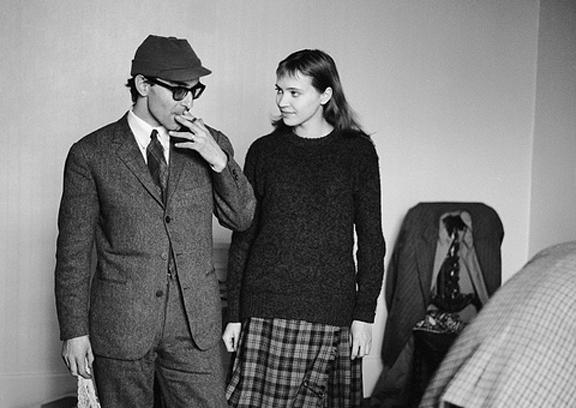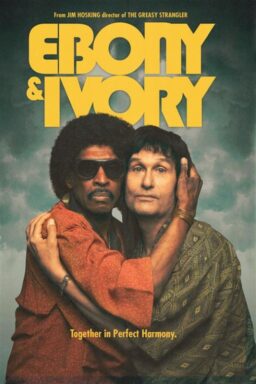For many American moviegoers, Jean-Luc Godard’s “Breathless” (1960) was an introduction to the new style of French filmmaking. Everything about the movie seemed filled with life, invented on the spot. Godard scribbled the script on the backs of envelopes every morning before shooting. For his hero he chose an unknown, Jean-Paul Belmondo, who was not handsome like Rock Hudson but ugly like Humphrey Bogart. Aware of the inevitable comparisons, Belmondo parodied Bogart in a memorable scene which put him in the tradition of the master.
“Breathless” was sort of a gangster picture, if it was a picture about anything. Belmondo brandished a big revolver and talked with a cigarette in his mouth, like Bogart, and he had a moll and he was doomed to die. Audiences liked the movie as much for Godard’s unrehearsed approach to camera technique as for Belmondo’s performance.
Godard got into movies backwards. With Francois Truffaut and Alain Resnais, he began as a film critic for the French magazine Cahiers du Cinema. Like all film critics, he held the firm belief that if he had the money he could make a better film himself than most he had seen. In his case, this happened to be true.
First Truffaut quit his job as a critic and made a movie, “The 400 Blows.” It was astonishingly good. Then Resnais made “Hiroshima, Mon Amour.” It was even better. Godard could wait no longer. He absconded with the petty cash fund of Cahiers du Cinema and started to make “Breathless.” When his colleagues caught up with him, they behaved exactly as they should have. They told him to keep the money and supplied him with more funds. How simple this all seems in France! “Breathless” was eventually hailed as “the single most influential movie of the last 10 years.” By whom? Cahiers du Cinema, if you must know.
Despite this early success, Godard has not fared as well recently as his contemporaries. Resnais followed “Hiroshima, Mon Amour” with “Last Year at Marienbad” and the recent “Persona,” which has been hailed as a masterpiece in New York but hasn’t been booked yet in Chicago.
Truffaut followed his first success with others, such as “Jules and Jim,” “Shoot the Piano Player,” and “Fahrenheit 451,” a recent excursion into color and English dialog.
But Godard, whose work is at least as interesting, has not gathered a similar following. His films are usually hard to find here, and it is heartening that several will play Chicago in the near future.
His excellent “The Married Woman” will open Friday at the Monroe. The Clark plays a Godard Festival August 24-26, featuring all six of his films. And the Aardvark Cinematheque will play “My Life to Live” (1963) from Tuesday through Saturday this week.
The latter is the casual record of a young girl (Anna Karina) who leaves her husband and children, drifts into an easy relationship with the sort of people who hang around drug stores, grows promiscuous and eventually turns to prostitution.
Godard divides his film into 12 “episodes,” each one introduced with old-fashioned titles of the sort used in Victorian novels. Miss Karina, whose face is so beautiful that one wonders why she ever bothered to learn to act so well, moves casually from one “friend” to another. Her experience hardly seems to affect her.
She dreams sometimes of going into the movies, or becoming a model, or something. She occasionally drifts close to the truth. In one striking scene, she dances around a pool table, oblivious to her surroundings, as happy and simple as a little girl. In another scene, handled very well, she becomes engrossed in a conversation with a professional philosopher.
At the end of the movie she dies a melodramatic death, quite in keeping with the melodrama of the titles at the beginning of each episode. But the movie itself is anti-melodrama, so casual, natural and spontaneous that one could say it seems as inevitable as life – if that were not a phrase sounding suspiciously French film critic-like.












